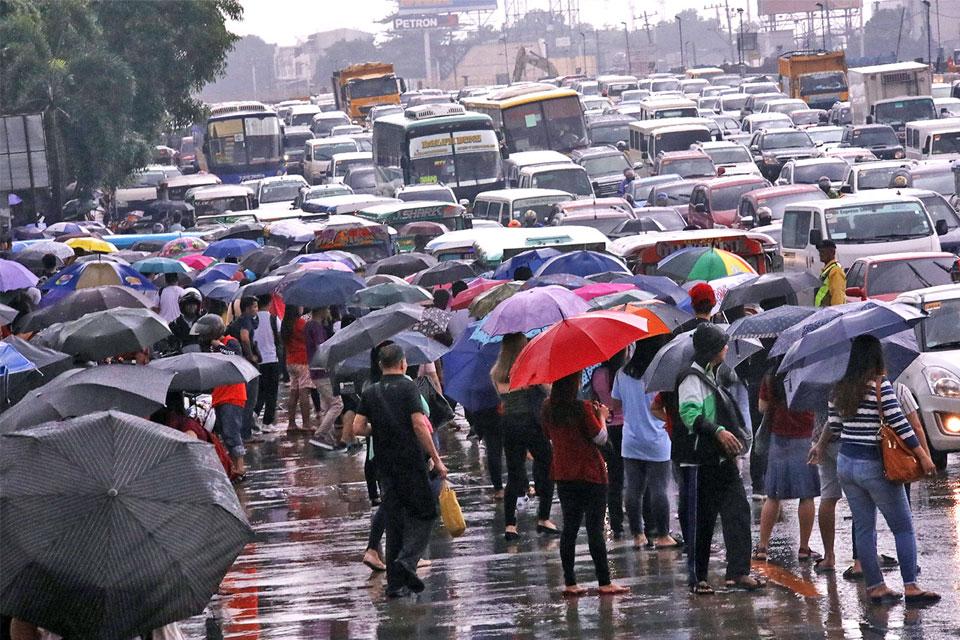Presidential emergency powers to solve the traffic problem

The gridlock plaguing the country’s urban centers, particularly the streets of Metro Manila, has once again come to the fore, driving a wedge between the executive and legislative regarding the need for legislated emergency powers in favor of President Rodrigo Duterte.
With emergency patients dying on the way to the hospital as ambulances get stuck in traffic, and countless numbers of commuters spending at least two to six hours in public transport, there is a pressing need to address the situation.
The Duterte administration wants emergency powers for key government officials to address the traffic situation, claiming such authority on paper could speed up the process of implementing the solutions.
A similar bill filed in the Senate during the 17th Congress was shelved, while the House of Representatives approved its version—would could not crafted into law for the President to enact without the counterpart bill from the Senate.
Under the 18th Congress, at least three bills on emergency powers have been filed.
Crisis management committee
The Tolentino bill designates the Transportation Secretary—in this case Secretary Arthur Tugade—as chairman of a traffic crisis management committee, or the traffic czar, under the direct control and supervision of the President.
As the President’s alter-ego, the traffic czar is authorized to exercise all powers necessary, utilize all resources, exercise police power and eminent domain, and employ executive actions and measures to solve the problem.
The czar is mandated to create a Traffic Crisis Action and Mobility Plan, and possibly take over or direct the operation of any public utility vehicle necessary to implement the law.
“This bill proposes to declare the existence of a national emergency in view of the traffic and congestion crisis in Metropolitan Manila, Metropolitan Cebu, and other highly urbanized cities ... to authorize the President, for a limited period and subject to restrictions, to exercise powers necessary to effectively address the said national emergency,” said Tolentino.
But the proposed measure does not sit well with legislators, especially in the upper chamber. Senator Grace Poe has taken the position that such powers must be justified.
“They will have to explain exactly how the emergency powers will speed up efforts to solve traffic,” Poe, who heads the Senate Public Services Committee.
On Tuesday, Poe and Tugade got into a heated argument over the emergency powers.
Tugade argued that the traffic situation would not have reached its current state if the presidential powers had been legislated three years ago.
Not ‘urgent’
Poe noted, however, that the Department of Transport (DOTr) has the capacity to implement the necessary measures even without emergency powers.
The proposed measure has not been certified “urgent” by Duterte, unlike other measures such as the Tax Reform for Acceleration and Inclusion (TRAIN) law and the Bangsamoro Basic Law.
“Wala ho kaming sinasabi na wala ho kaming nagawa kasi walang emergency power. Wala ho akong sinabing ganyan. Ang sinasabi ko ho, mas marami ho sana kaming nagawa kung meron hong emergency power,” Tugade said in a separate statement late Tuesday.
He clarified that the emergency powers would only last for one to two years, and that the oversight functions of the Congress would still be in place.
The DOTr noted the emergency powers would immediately allow the executive to adopt policy directions that would normally require time-consuming amendments to existing laws and ordinances.
Emergency powers would fast-track procurement, right-of-way acquisitions, and relocation process so that priority infrastructure projects could start sooner than later and be elevated at a faster pace to partial operability.
“With emergency powers, we can finish our railway projects ahead of the original schedule and implement partial operability so that the riding public need not wait for full completion,” Undersecretary for Railways Timothy Batan said.
Likewise, Undersecretary for Road Transport and Infrastructure Mark de Leon said having emergency powers could resolve the consolidation of franchises so that all bus units are coordinated as a single unit.
Assistant Secretary for Procurement and Project Implementation Giovanni Lopez said the procurement for transportation projects could move faster—a pressing need to avoid delays in ongoing infrastructure projects.
The Transportation chief hopes that the emergency powers will consolidate relevant government agencies into a cohesive unit to address the current traffic situation.
“We need to have a single traffic authority to address the monster problem that is EDSA. We need a traffic czar,” Tugade said. —VDS/JST, GMA News



